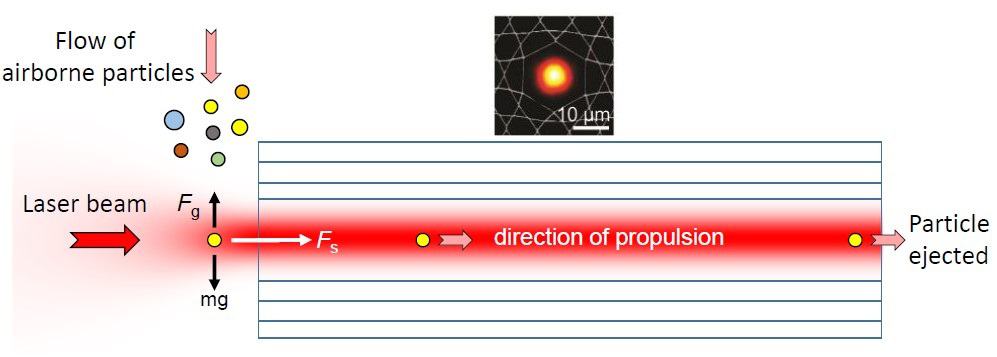
Researchers in Germany have developed a novel laser and optical fibre-based technique for measuring micrometre-sized airborne pollutants. They say that their method has the potential to offer real-time, in situ measurement and identification of this ultra-fine particulate matter, which can penetrate deep into the lungs, causing serious health problems (Optics Express 10.1364/OE.27.034496).
Exposure to airborne pollutants that measure less than 2.5 µm (known as PM2.5) has been linked to cardiovascular and respiratory disease, as well as cancer. According to the World Health Organization, these particles – which are around 30 times smaller than the diameter of a human hair – are responsible for an estimated 4.2 million premature deaths every year.
There are many techniques available for measuring airborne pollutants, but they all have drawbacks and most are not very good at monitoring the really small particles, Shangran Xie, at the Max Planck Institute for the Science of Light, tells Physics World. He adds that most options involve sampling the air and then taking it back to the lab for analysis.
Xie and his colleagues develop and work on applications for hollow-core photonic crystal fibres, such as wavelength conversion and opto-mechanics. They wondered if some of this fibre technology could find use in pollution monitoring.
“We don’t really work in this area of environmental monitoring, but it just occurred to us that the hollow-core fibre we work with is pretty much ideal, because you can have a cheap laser that focuses its light right into the hollow core and then, through optical forces, any particle that wanders by gets trapped by the laser and pushed into the hollow core,” explains Philip Russell, Director of the Max-Planck Institute for the Science of Light.
As the laser light and the particle – which is trapped by the laser due to its tiny size – travel through the hollow-core photonic crystal fibre, some of the light is scattered. By measuring the changes in the transmitted light and the time it takes a particle to transit the fibre, the researchers are able to extract useful information about the particles, such as their size and refractive index. And from this data, they can identify them.

Russell explains that we know what most of the pollutants present in the air are and we know their refractive indexes, therefore identifying individual particles from this information isn’t too difficult.
The researchers tested the technique using a range of polystyrene and silica particles, and found that the device could successfully identify and measure different particles, including silica particles that were 0.99 µm in diameter.
Due to the way in which it works, Russell claims that the device should be very robust. The particle gets pushed out the other end of the fibre, so it doesn’t cause any issues by getting stuck, he explains. “The system in principle should run for ever,” he adds. “You have to filter out the large particles, of course, before you actually test the air, as they would mess up the system.”
Xie says that although they have tested materials besides silica and polystyrene, the researchers need to conduct more work on non-transparent particles and real-world examples of pollutants. The team have filed a patent on this technique and plan to develop a prototype for monitoring air pollution outside of the lab.



